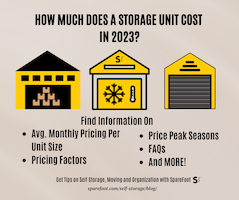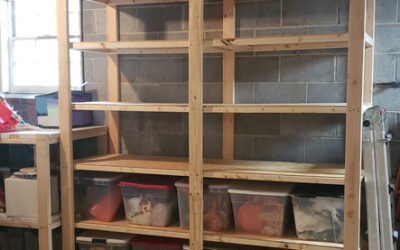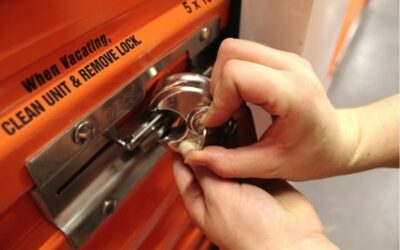It’s early in the morning, you haven’t had the chance to sip your coffee yet and you’re trying to find your way through the minefield of toys, scattered clothes and art supplies that is your child’s bedroom. Every step is a careful calculation to avoid the dreaded crunch of a misplaced action figure or the slip of a stray sock. Or worse – finding a stray Lego with the bottom of your foot.
In all this colorful chaos, your little one is frantically searching for their favorite teddy bear, their frustration mounting by the second. You can’t help but feel a wave of stress too, realizing that the room’s disorder is not a minor nuisance — it’s a daily hurdle for both of you.
Anyway, our mission here is quite simple: to arm you, the superhero parents, with a toolkit of easy, actionable strategies that can help transform that cluttered battleground back into a peaceful sanctuary for your kiddo. Ready? Let’s go!
Set Clear Goals
So, you’ve decided that decluttering your kid’s room is something worth doing. Before going head-first, we suggest setting clear and achievable goals. In fact, that should be your compass in all the chaos that awaits, to keep you motivated and on track.
For instance, how about beginning with the end in mind? Just picture what you want the room to look like when you’re done — a tidy space where your child can grow and be happy. Then, break down the decluttering process into small, more manageable tasks. How small? Somewhere along the lines of sorting out toys, reorganizing the bookshelf and dealing with the closet.
By approaching it this way, the whole decluttering shebang seems less intimidating. It’s small steps that lead to big wins. All better already, right?
How To Sort and Categorize
Turn the sorting and categorizing process that precedes decluttering your kids’ rooms into a playful yet educational experience. Sorting through the clutter with your child can turn a dreaded chore into a chance to connect.
- Kick things off by clustering them into broad categories like toys, clothes, books and school supplies. It’s a simple step, yet it helps both you and your kid see what’s actually there.
- Let your kid take the lead in sorting their stuff, especially toys. This is a great opportunity for them to make decisions and learn to prioritize. Oh, how I wish this happened to me as a child — the struggle is still very real.
- Label all boxes and bins. If your children are too young to read, use visual aids like pictures or colors on boxes to denote categories. This makes it easier for them to understand and participate in the process.
Pro tip: Have a dedicated space for items that hold special meaning. Allow your kids to have a “memory box” or a special shelf for these treasures. It respects their feelings and helps them transition more easily into letting go of other items. After all, the purpose is to declutter, not just to tidy up a bit.
Keep, Donate or Discard?
We have made significant progress but you still don’t know how to declutter a kid’s room. That’s because we haven’t yet discussed what stays and what goes. You want to strike the right balance between what’s practical and what’s sentimental. And remember, these decisions should be a joint effort with your child to ensure their comfort with the choices made.
KEEP: Focus on items that are regularly used, have sentimental value or help your child’s development and make them happy. If it’s either loved, used often or essential, it definitely stays.
DONATE: Gently used items that your child has outgrown, but are still in good condition, can find a new home and they should. Local charities, schools or children’s centers often welcome donations of toys and clothes. Need to make an extra buck? Sell them online. Kids outgrow things so quickly you should also consider buying some of their toys and clothes second-hand. Just think about it: the average annual spend on kids’ goods is $762, three times more than if you were to buy them slightly used.
DISCARD: Some things are just broken, unsafe or irreparable. These should be discarded, no questions asked. Be mindful of recycling and proper disposal methods to minimize environmental impact and explain to your kid why they can no longer keep them.
Pro tip: Consider a rotation system for toys. Store some away and keep a few out. Rotate them periodically to keep your child’s interest and reduce clutter.
Here’s a cheat sheet for quick decision-making when you declutter the kids’ rooms:
| Keep | Donate | Discard | |
| Toys | Frequently used | Gently used, outgrown | Broken, missing parts |
| Clothes | Fits, in good condition | Outgrown, seldom worn | Torn, heavily stained |
| Books | Favorites, educational | Outgrown, less interest | Damaged, missing pages |
The Key To Managing Sentimental Items
Your kid can have a strong emotional connection to certain objects. These could be anything from a first drawing to a well-loved stuffed animal. But how do you balance these cherished items with the need to declutter your kids’ rooms? A gentle approach is to create a dedicated memory box.
It could be a simple box or a more decorative one, depending on your child’s age and preferences. Think of it as a personal museum of their childhood, holding items that are too precious to part with but not necessary for daily use. Since the memory box has limited space, it helps your child make thoughtful decisions about what truly matters to them.
Go periodically through the memory box with your child. Sometimes, as they grow, their attachment to certain items lessens. They might be ready to let go of them and make room for something else. This simple system for managing sentimental items teaches your kid to cherish memories while also respecting the limits of their physical space.
Treasure Chest Box from My Tiny Treasures Box Company – $24 on Amazon.com
Pro tip: Not everything can go in a memory box, but children’s artwork can be digitized. You can even take photos of bulky items and store them digitally. This way, the memory lives on without the physical clutter.
Maintain a Clutter-Free Environment
Now that you’ve transformed chaos into calm in your child’s room, the key is to keep it that way.
Make tidying up a regular part of your child’s daily routine. This could be a quick 10-minute clean-up before bedtime or a weekly “organizational check-up”. The key here is to make tidying up a habit rather than a chore. You can make it more fun by introducing games or small rewards for keeping the room tidy. This might even turn decluttering the kid’s room into something enjoyable that they look forward to.
Of course, it also helps to turn maintenance into a team effort. Assign your child simple, age-appropriate tasks like putting toys back in bins or books on shelves while you pitch in with the rest. As your child grows, their interests and needs will change. Try to hold a regular decluttering session, perhaps every season, to reassess and reorganize their space. This is the way to go if you want to keep the clutter from creeping back in.
Set a Positive Example
As parents, we run the household, and our kids look to us for how to do things. That’s no easy job, but it means that when we tidy up and get rid of stuff we don’t need, it shows our kids how to do it too. So, if you’re still wondering how to declutter children’s bedrooms, just lead by example.
- Show your kids how you sort and clean your stuff and talk to them when you’re choosing what to keep or give away. Explain why it’s good to give toys they don’t play with to other kids who might need them. Better yet, if they see you giving away things you don’t use, they’ll learn to do the same.
- Show them that fun doesn’t always come from things. Playing a game, making a craft or reading a book together can be just as great. This goes for rewarding too. High fives for doing well at school or helping out can be better than a new toy. Maybe let them choose what game to play or what to watch together instead.
- Teach your kids to be grateful for what they have by showing gratitude yourself. This helps them be happy with their toys and not always want more.
By setting a positive example and involving your children in the process, you’re shaping a mindset. One that values organization, generosity and the importance of being clutter-conscious.
The Benefits of a Clutter-Free Kids’ Bedroom
Ah, the peaceful kingdom of a child’s bedroom! A magical place where socks turn into puppets and books build castles. But when clutter takes over, it’s pretty much what nightmares are made of. Take a deep breath and make a plan to tidy up, organize and finally declutter the kids’ room.
It’s a special space and you’re setting the stage for them to enjoy a room where creativity blooms, focus sharpens and peaceful sleep is just a fluffy pillow away. Let’s discover together why a tidy territory is best:
- Just like us, kids need a clear space to think clearly. A decluttered room minimizes distractions and helps them concentrate better on homework, crafts or even just daydreaming. That’s important too.
- In a clutter-free, cozy cocoon, your kids have fewer distractions. This means falling asleep faster and enjoying better sleep quality. It’s just amazing how a tidy room can set the stage for sweet dreams.
- An organized space opens up room not just physically, but mentally too. This is where your child’s imagination gets to perform its best show yet. Watch as their creativity blossoms after you declutter the kids’ room.
- It’s been shown over and over that less clutter equals less stress. Yes, a tidy room is like a breath of fresh air that makes it less overwhelming for both kids and parents. The only high-pitched drama here is from their action figures.


